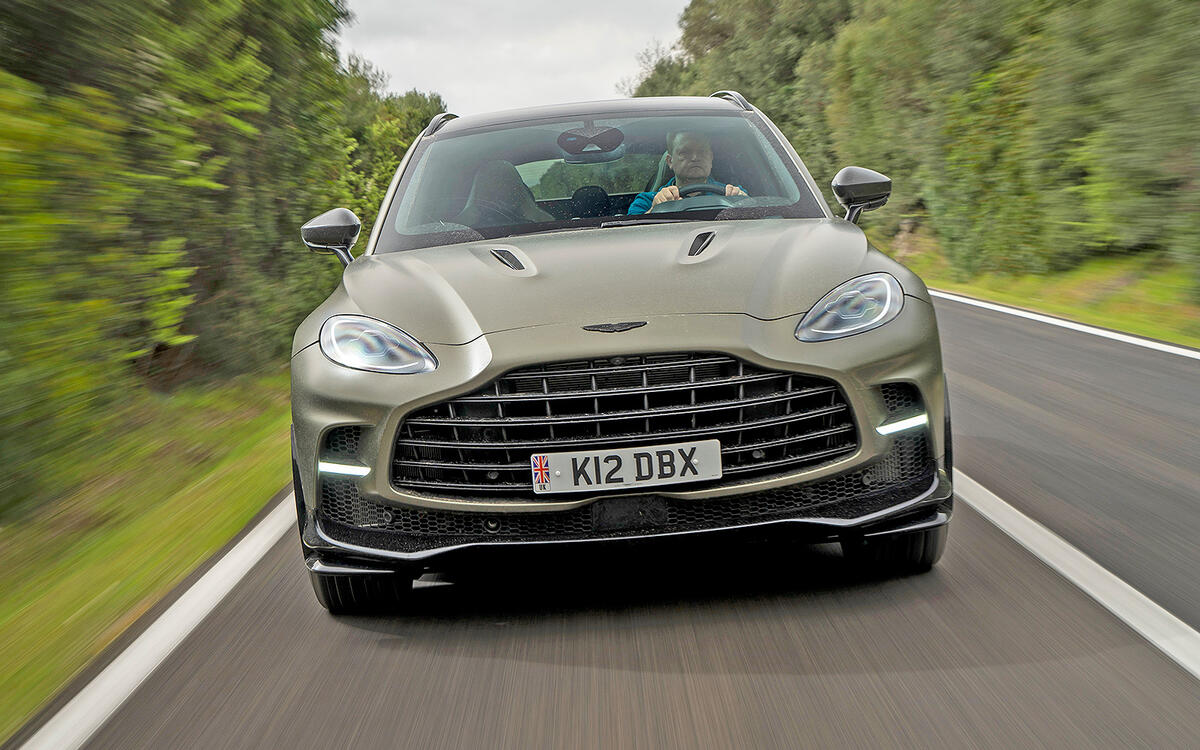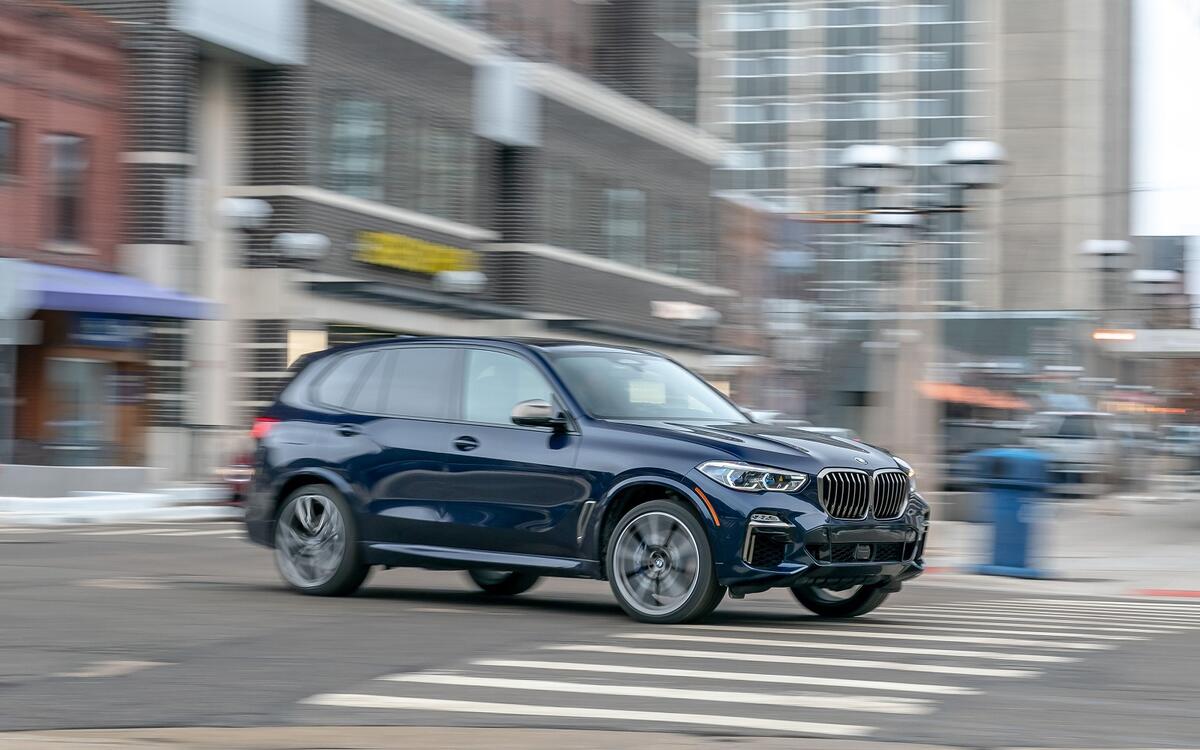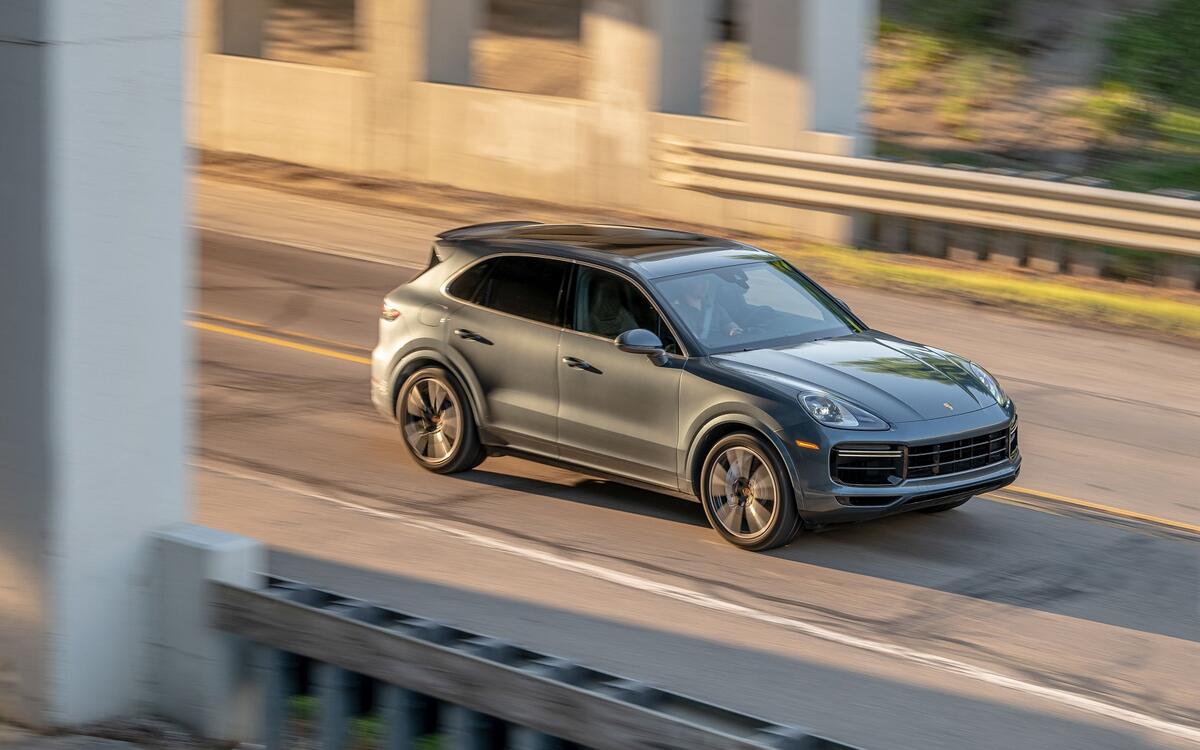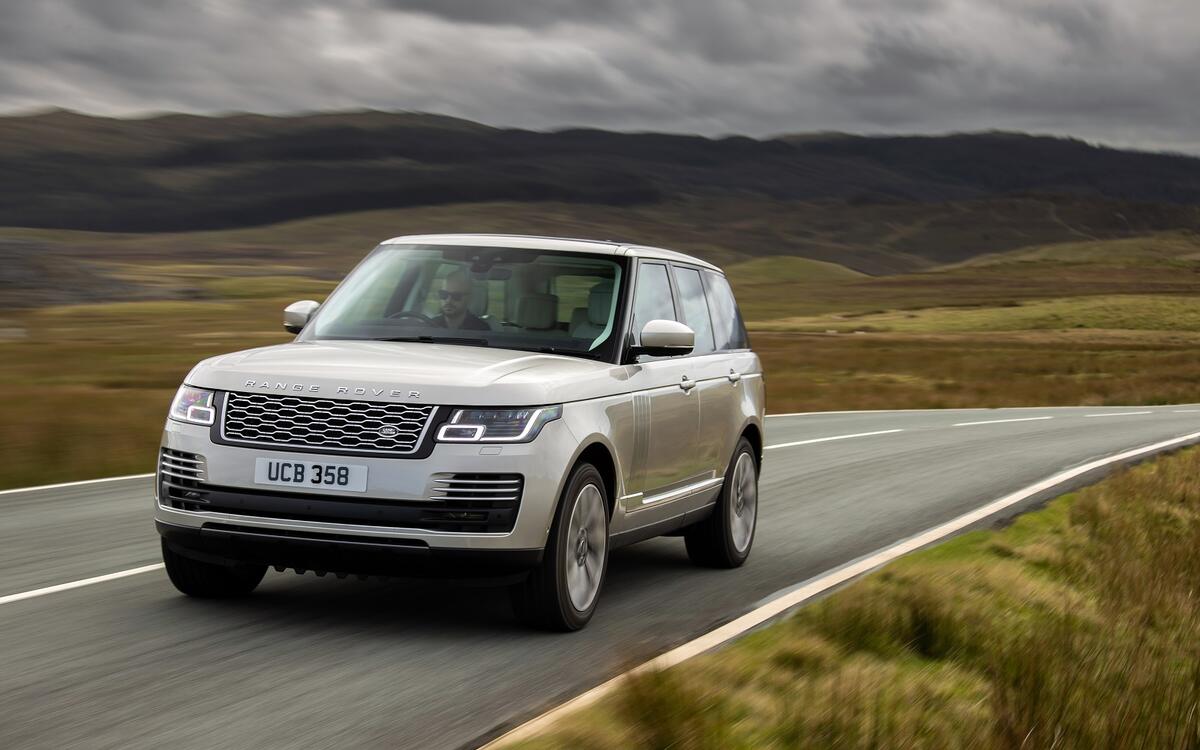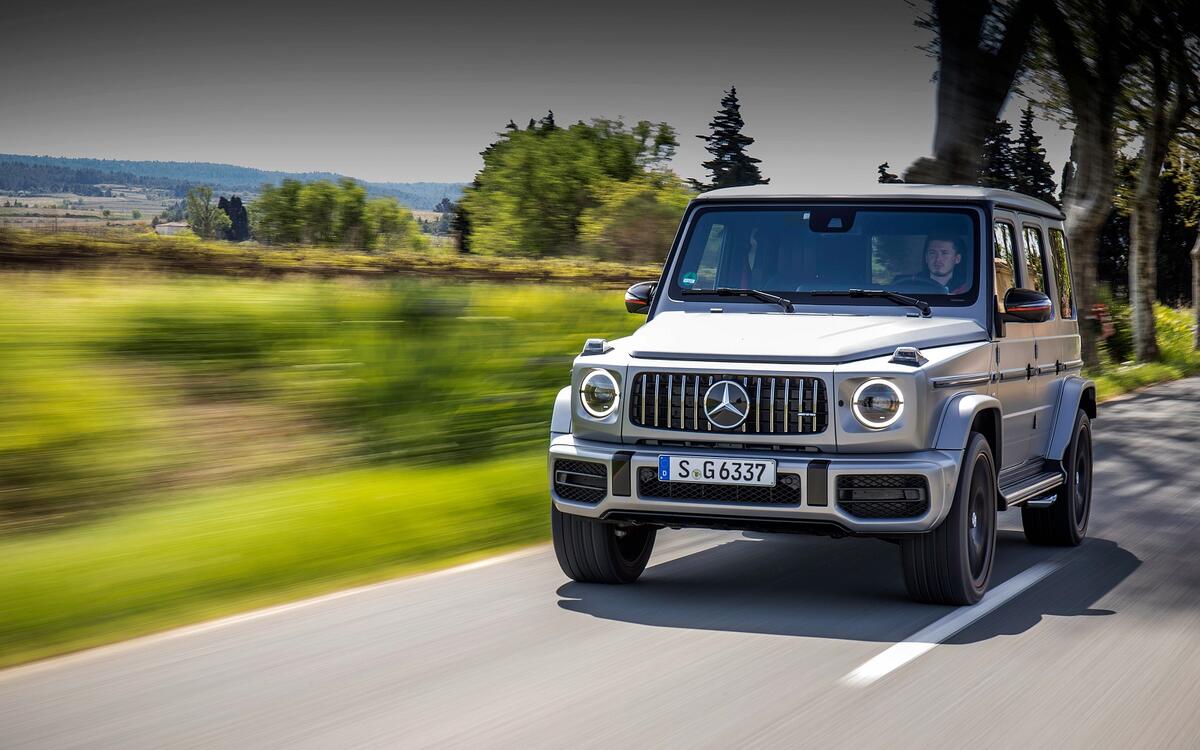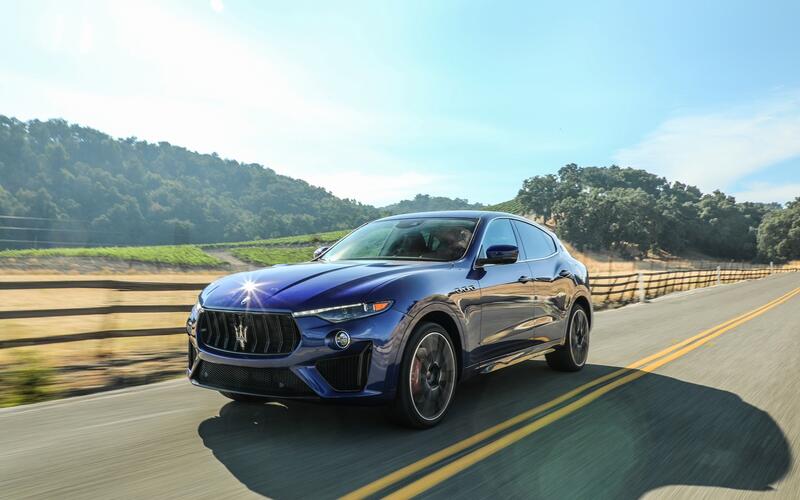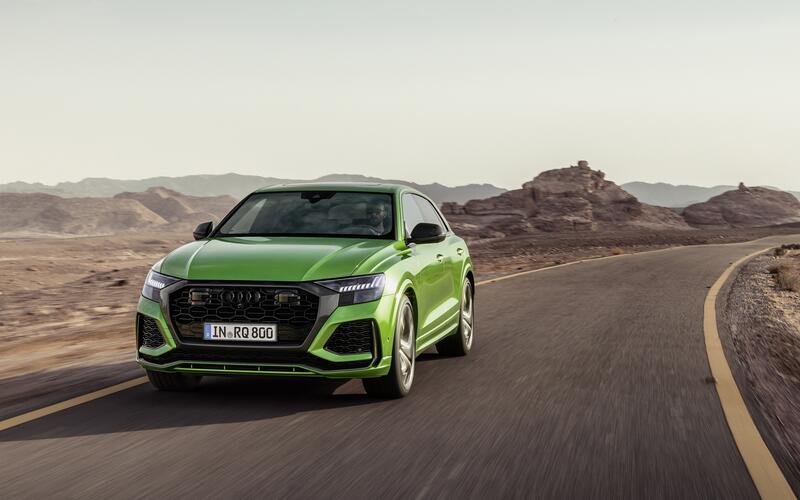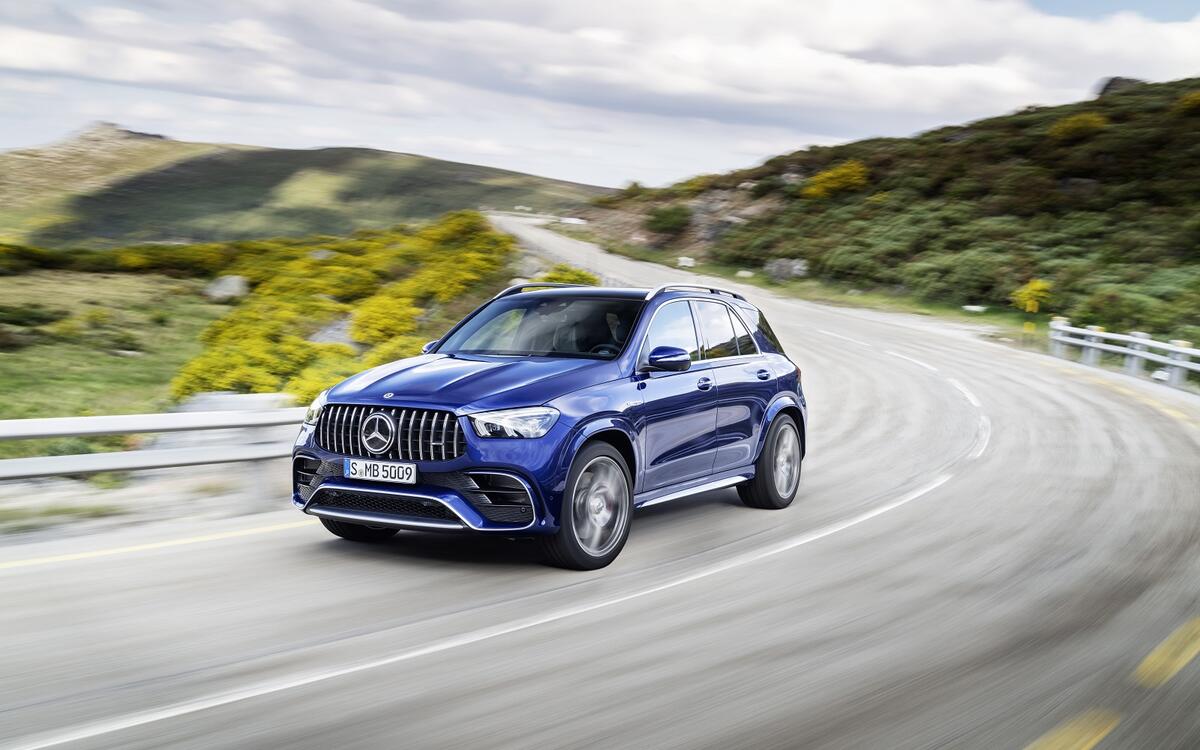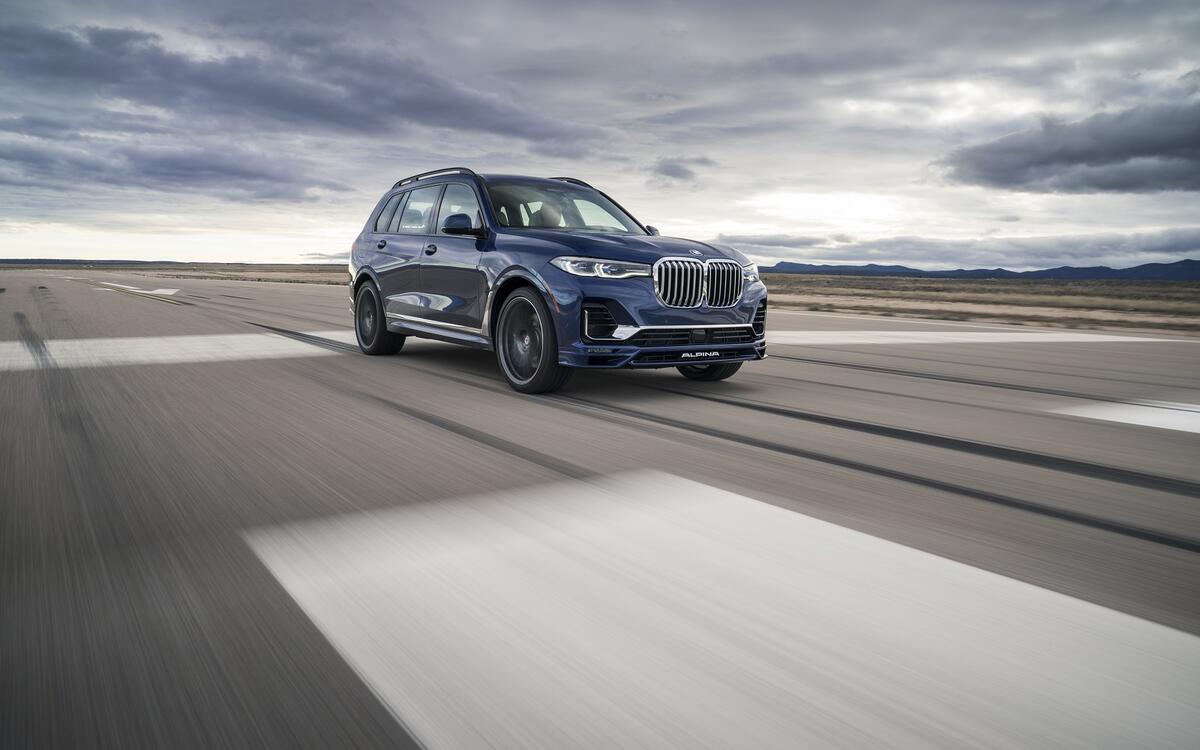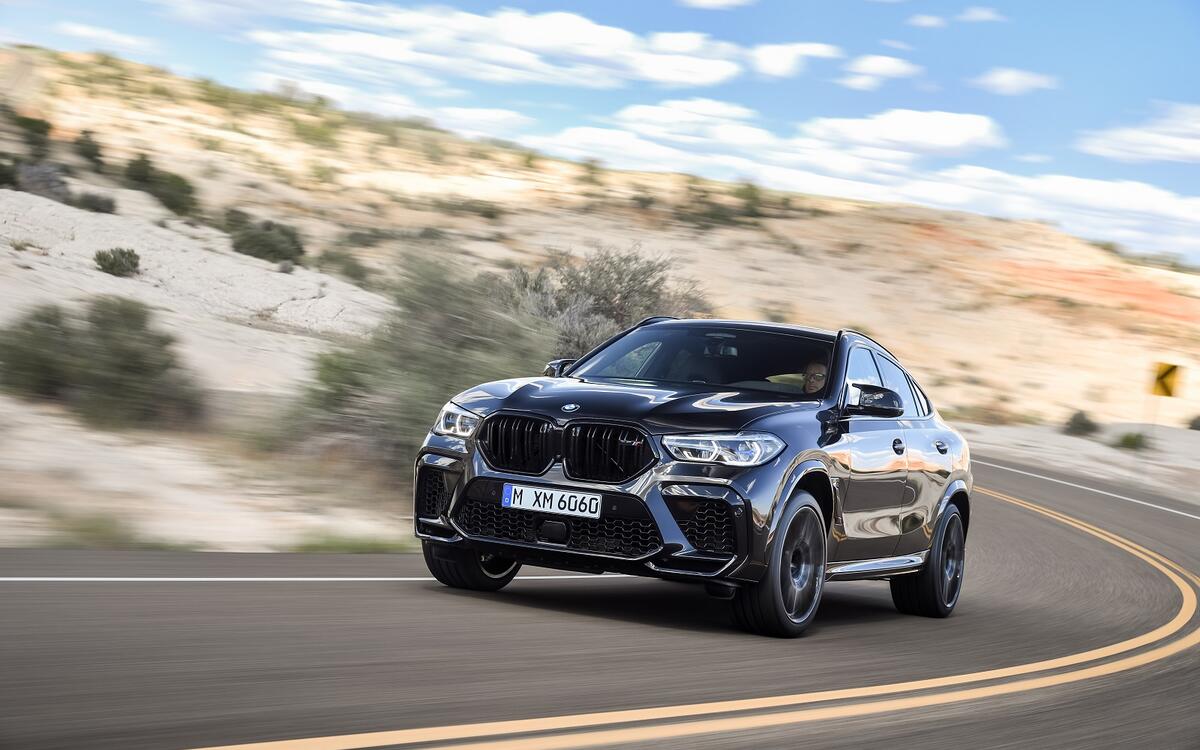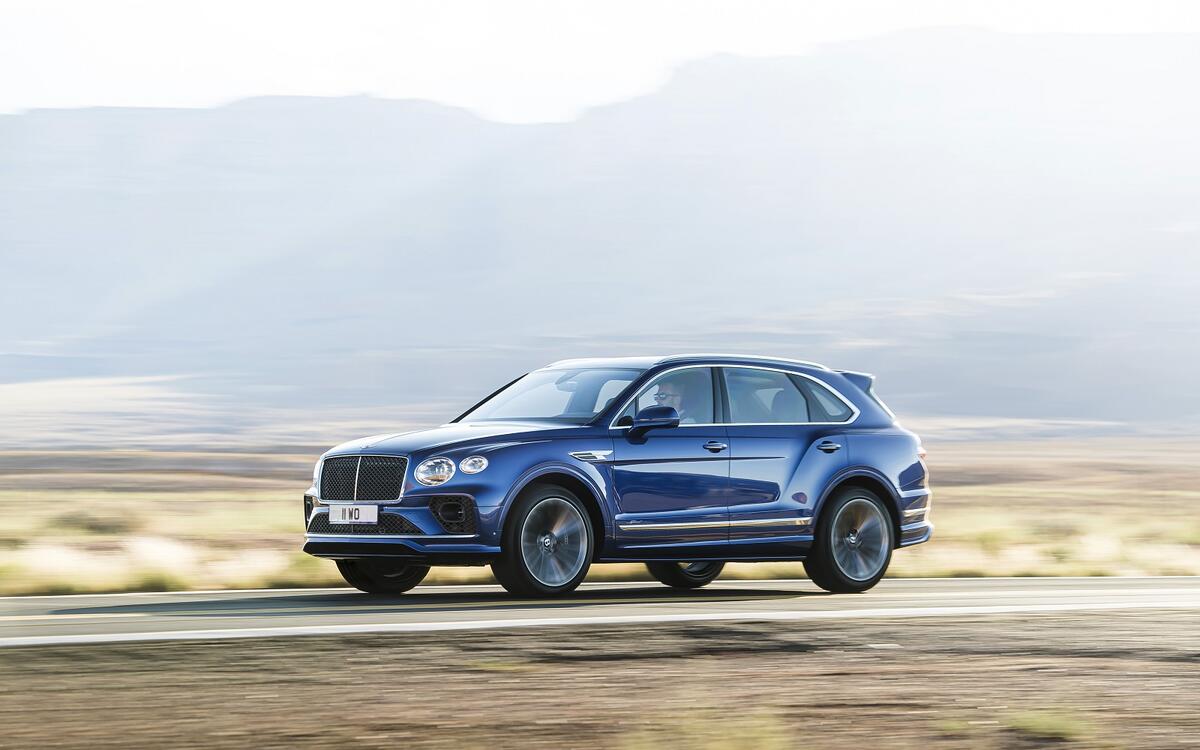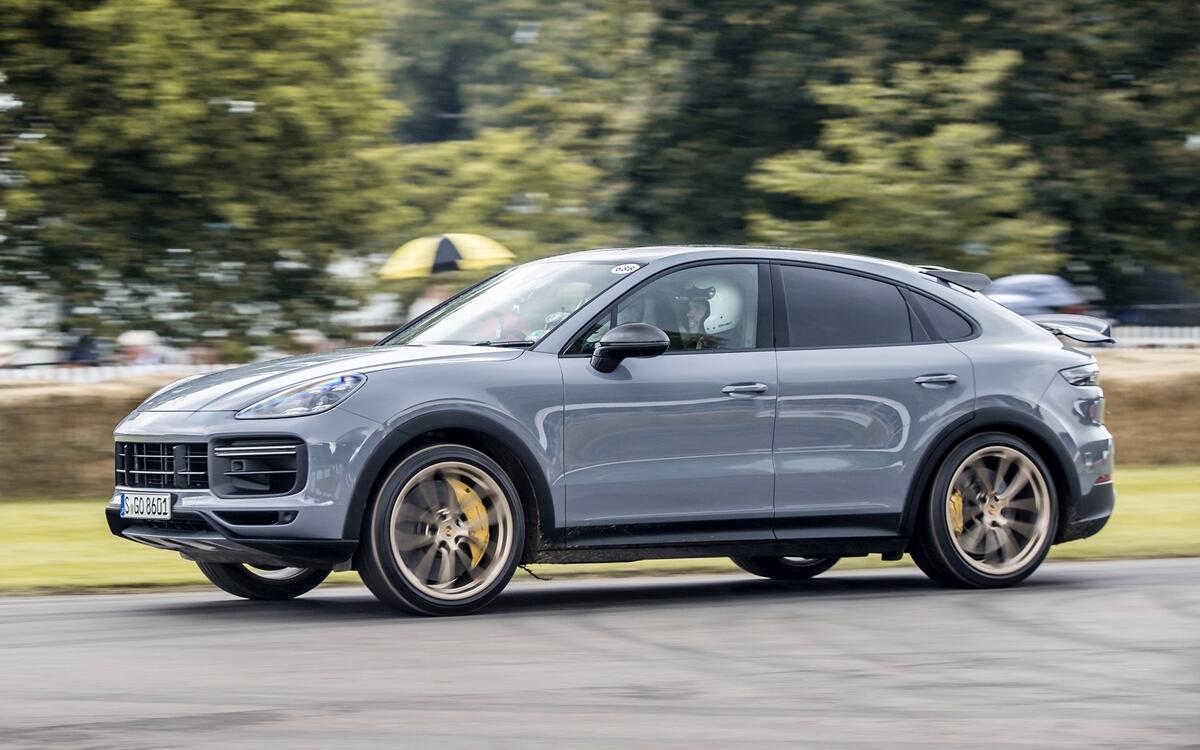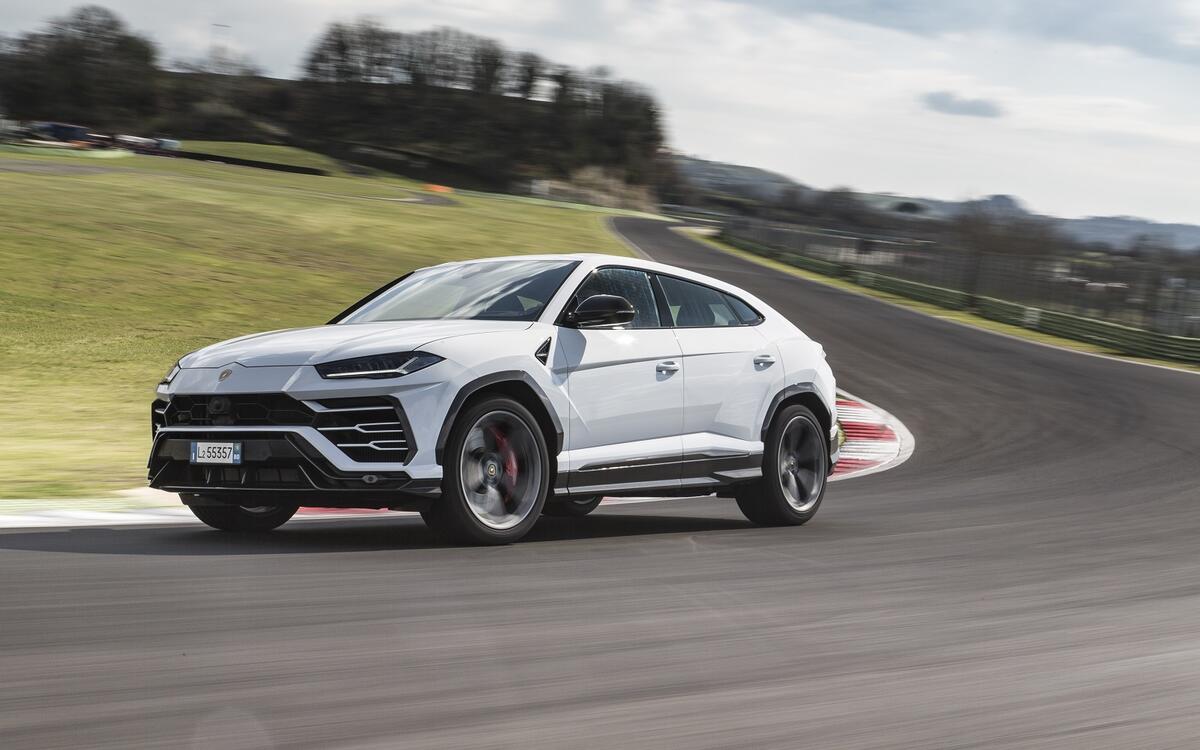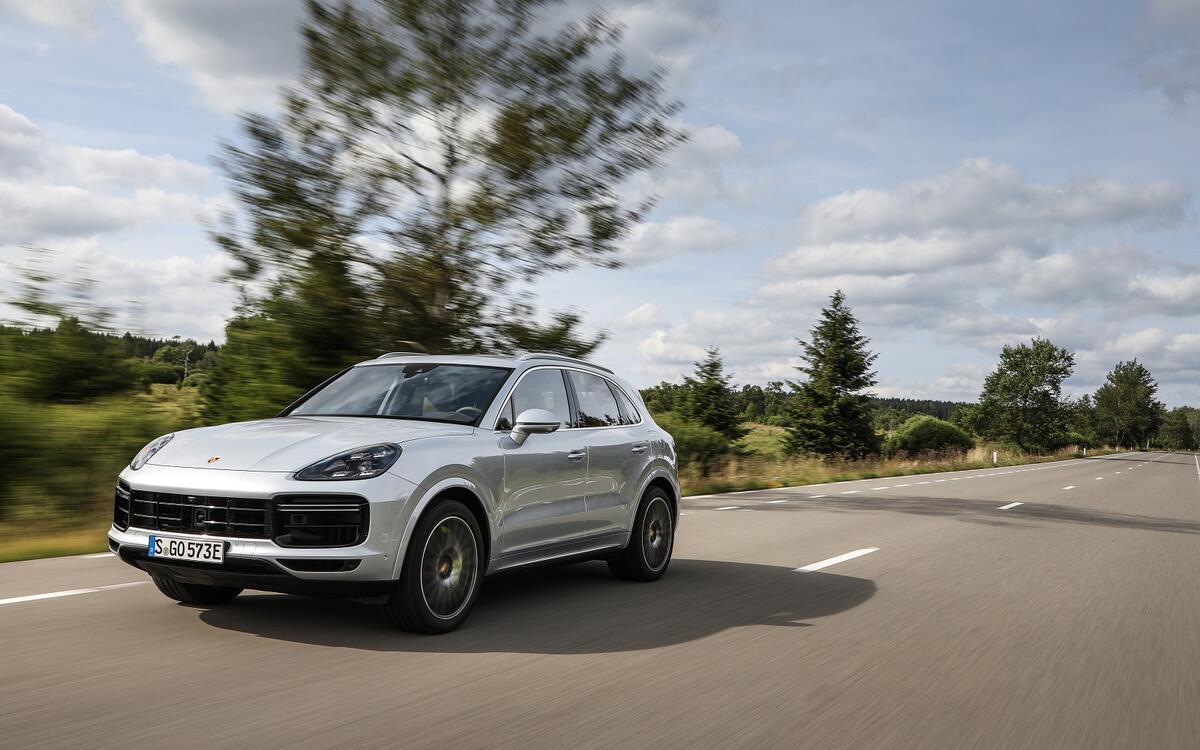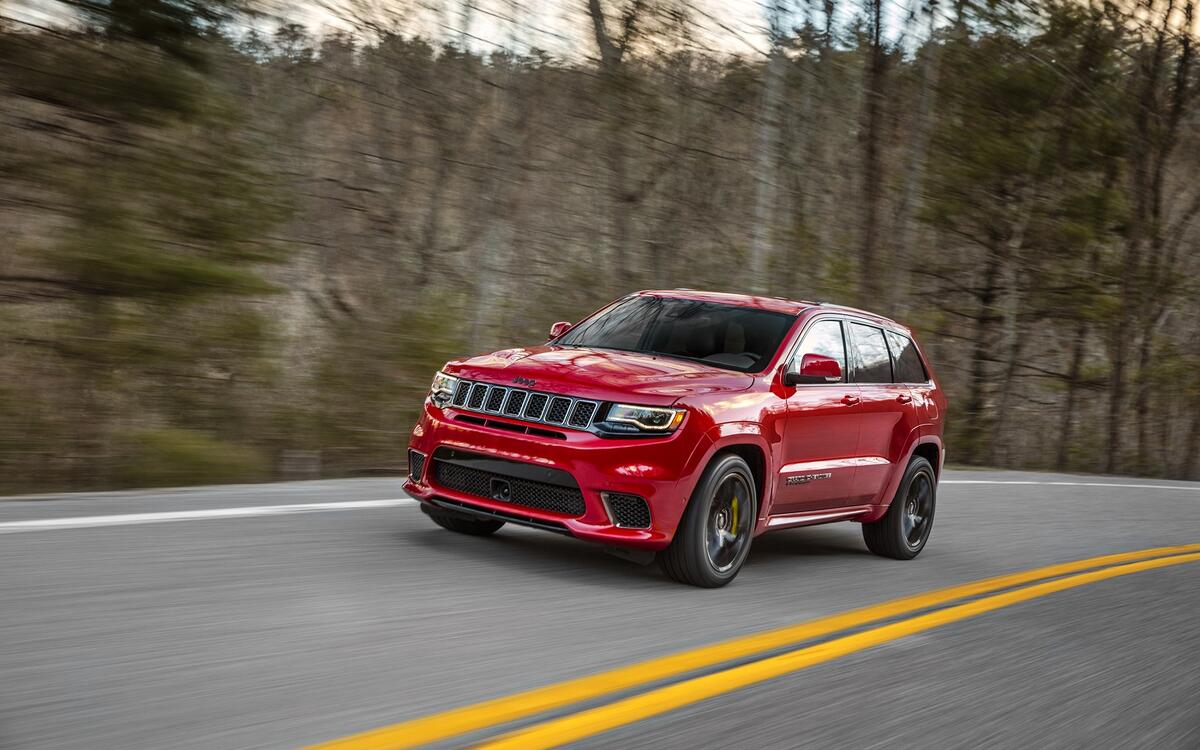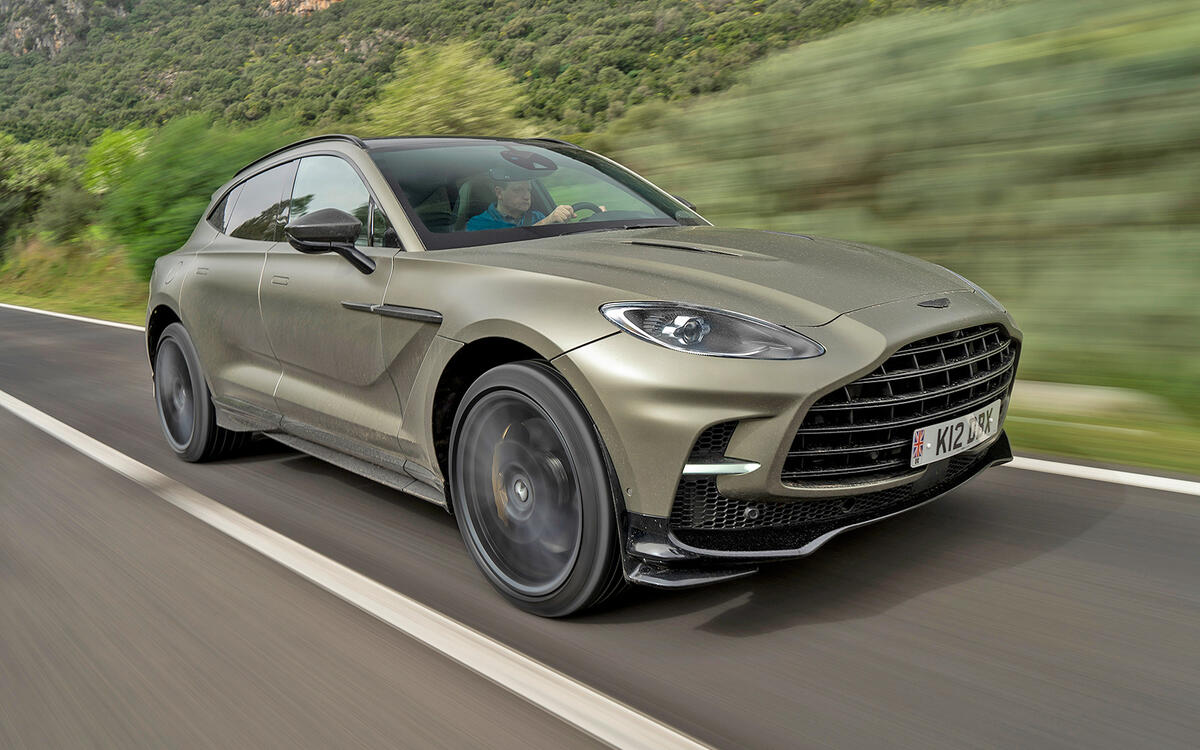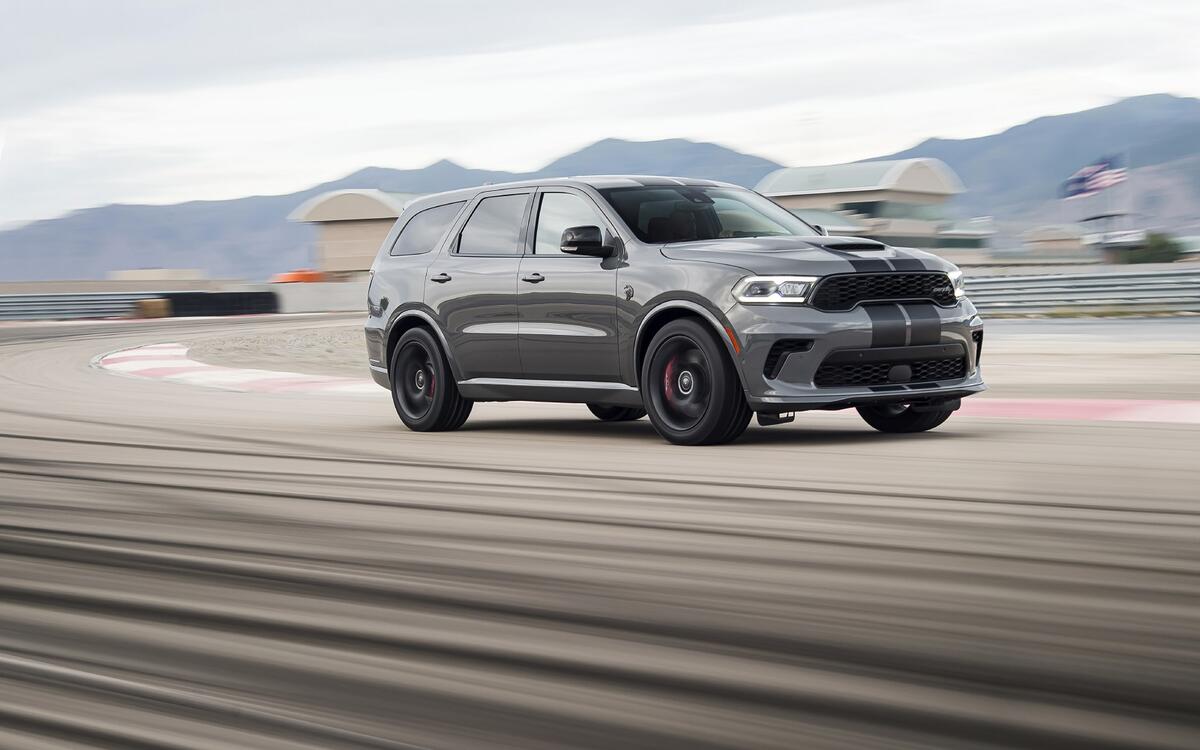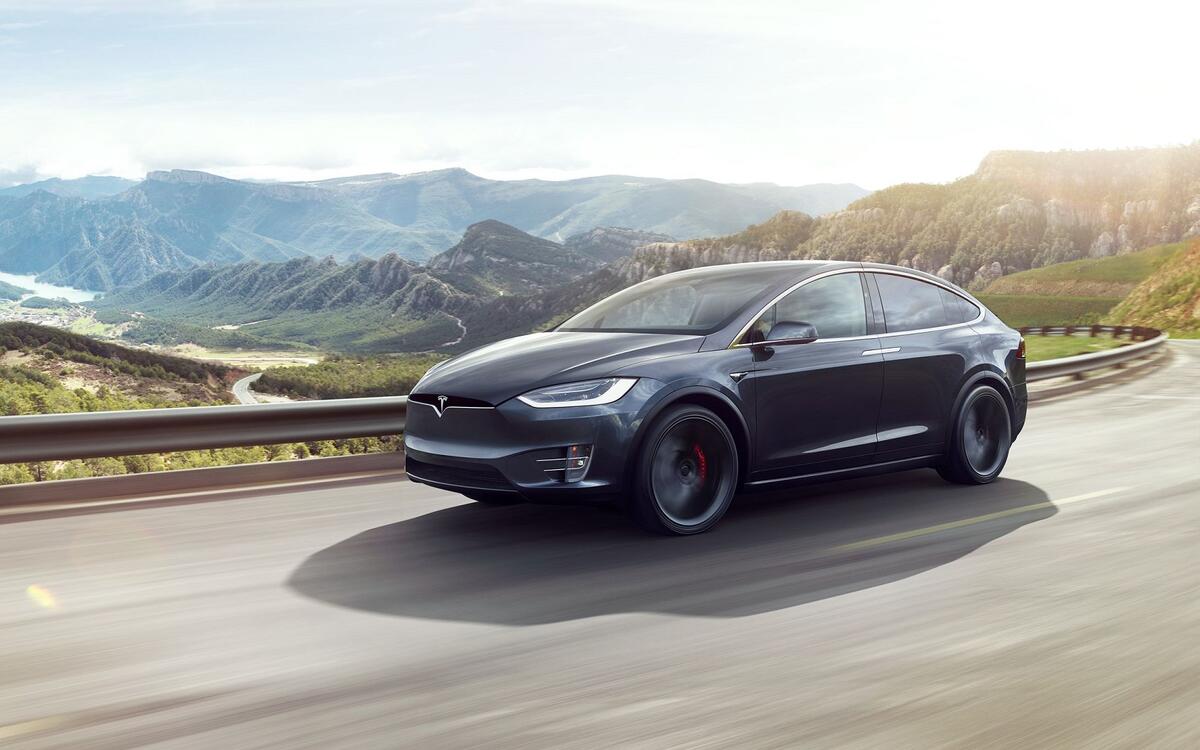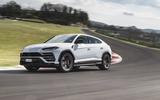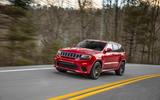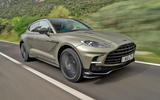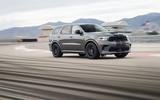 Slide of
Slide of
SUVs and performance were mutually exclusive for decades.
On one end of the spectrum, SUVs offered the unmatched ability to go far off the beaten path and return in one piece. On the other, sports cars were tailored for on-road speed, whether in a straight line or around a bend. These segments unexpectedly began to converge during the 1990s, and there’s no shortage of people-hauling off-roaders with supercar-like power to choose from in 2021.
Using horsepower as a yardstick, here are the most powerful SUVs available globally - we start at the 'least' powerful (relatively) and work our way up to the most powerful SUV right now:
 Slide of
Slide of
BMW X5 M50i/X6 M50i (530 hp)
BMW positions the M50i versions of the X5 (pictured) and the X6 at the top of each model’s respective non-M-tuned range. Both proudly buck the downsizing trend sweeping across the industry with a 4.4-liter V8 twin-turbocharged to 530 hp, which is enough for a 4.3sec sprint from 0-60mph. While the M50is aren’t BMW’s most powerful SUVs, they’re markedly quicker than the average family hauler.
 Slide of
Slide of
Aston Martin DBX (550 hp)
Aston Martin enlisted the help of Mercedes-AMG to design its first entry into the lucrative SUV segment. While the DBX fits right in with the rest of the firm’s range, it’s powered by a 4.0-liter twin-turbocharged V8 developed by AMG and tweaked by Aston Martin. It develops 550 hp in its standard state of tune, though executives have repeated hinted more powerful variants are in the pipeline.
 Slide of
Slide of
Jaguar F-Pace SVR (551 hp)
Jaguar designed the F-Pace’s engine bay with eight cylinders in mind but it didn’t release the V8-powered SVR model until 2018. In addition to a supercharged, 5.0-liter engine with 551 hp on tap, the SVR badge signals the presence of firmer springs, wider wheels, a lighter exhaust system, and sport seats for the front passengers. It’s what enthusiasts expected from the firm that brought them the F-Type.
 Slide of
Slide of
Porsche Cayenne Turbo (551 hp)
While turbo power comes standard across the Porsche Cayenne range, the Turbo emblem continues to denote a variant with a lot more power than the base model. Here, the ubiquitous twin-turbocharged 4.0-liter V8 makes 551 hp, a significant increase over the 459 hp it delivers in the Cayenne GTS.
 Slide of
Slide of
Land Rover Range Rover SVAutobiography Dynamic (565 hp)
The days when Land Rover sold a Range Rover with a double-digit power output are long gone. Now in its fourth generation, this hugely influential SUV is powerful no matter how it’s configured but buyers seeking the ultimate in speed need to step up to the SVAutobiography Dynamic model. Its familiar 5.0-liter V8 is supercharged to 565 hp, which is enough for a 5.1sec sprint from 0-60mph. Dynamic models benefit from a lowered suspension system and a more responsive steering system for better handling.
 Slide of
Slide of
Rolls-Royce Cullinan (571 hp)
Rolls-Royce is part of the BMW Group but it wisely decided not to rummage through its parent company’s parts bin as it developed its first SUV. Named after the largest gem-quality rough diamond ever found, the Cullinan puts motorists (or their chauffeur) in charge of a twin-turbocharged 6.75-liter V12 connected that channels 571 hp to the four corner via a permanent all-wheel-drive system.
It’s the only engine option available but buyers can work directly with Rolls-Royce to customise nearly everything else, including upholstery and trim; picnic seats for the rear hatch are even available.
 Slide of
Slide of
Mercedes-AMG G63 (585 hp)
Mercedes-Benz’s G-Class looks a lot like its predecessor when viewed from the outside, and that’s intentional, but everything under the sheet metal is new. AMG’s version of the SUV receives the same twin-turbocharged, 4.0-liter V8 found in numerous other models (including the Aston Martin DBX). It’s rated at 585 hp in the G63, which is enough to send this big box from 0-60mph in a claimed 4.5sec.
 Slide of
Slide of
Maserati Levante Trofeo (598 hp)
Maserati entered the SUV segment fashionably late. It made up for lost time by putting its Ferrari-derived 3.8-liter V8 in the Levante’s engine bay and tuning it to 598 hp, though Trofeo models sold on the European market settle for a 581 hp output from the same twin-turbocharged engine. Chassis modifications and a near-50:50 weight balance let enthusiasts make the most of the V8’s power.
 Slide of
Slide of
Audi RS Q8 (599 hp)
The Q8 isn’t Audi’s biggest SUV, that honour goes to the Q7, but it’s certainly not a compact. And yet, a 599 hp twin-turbocharged V8 pelts it from 0-60mph in 3.8sec, a figure normally associated with low-slung two-door models like, say, Audi’s own TT. In 2019, shortly before it made its official debut, the RS Q8 smashed the SUV lap record on Germany’s Nürburgring track by posting a time of 7min 42.2sec.
 Slide of
Slide of
Mercedes-AMG GLE63 S (611 hp)
Mercedes-Benz helped create the high-performance SUV segment when it launched the 347 hp ML55 AMG (W163) in 1998. Fast-forward to 2021: AMG has morphed into a full-fledged sub-brand named Mercedes-AMG, the ML now goes by the name GLE, and the full-fat, 603bhp 63 S variant uses a twin-turbocharged 4.0-liter V8. In 1998, Mercedes quoted a 6.9sec sprint from 0-60mph. In 2021, the GLE63 S takes 3.7sec to reach the same speed. AMG also puts this version of the 4.0-liter in the bigger GLS.
 Slide of
Slide of
Alpina XB7 (622 hp)
Alpina followed BMW’s move into the SUV segment with impressive results. Based on the mammoth X7, the XB7 offers drivers a more powerful evolution of the twin-turbocharged 4.4-liter V8 that exhales through a model-specific exhaust system. The extra power is complemented by visual tweaks that remain reasonably low-key while immediately identifying the XB7 as a member of the Alpina portfolio.
 Slide of
Slide of
BMW X5 M/X6 M (626 hp)
BMW objects to the term sport utility vehicle (SUV); it prefers Sport Activity Vehicle (SAV), a designation it coined to market the original X5. Regardless, its most powerful high-riding models are the Competition variants of the X5 M and the X6 M (pictured). Built on the same platform, they’re nearly identical underneath the sheet metal but one follows function while the other puts a bigger emphasis on form.
In non-Competition trim, the M’s 4.4-litre twin-turbocharged V8 is rated at 599 hp.
 Slide of
Slide of
Bentley Bentayga Speed (635 hp)
Bentley’s spin on the concept of a high-power people-hauler is unique in that it relies on a mighty 6.0-liter W12 engine for power. Most of the other SUVs in our round-up are powered by a V8. Its top speed is pegged at 190mph but it wasn’t designed solely to drive flat-out in a straight line. An earlier variant of the Bentayga Speed claimed the SUV record at the 2018 edition of the Pikes Peak International Hill Climb, completing the course in 10min 49.9sec at an average speed of 66.5mph.
 Slide of
Slide of
Porsche Cayenne Turbo GT (640 hp)
Porsche funnelled a surprising amount of racing expertise into the Cayenne Turbo GT. Offered solely as a Coupe, it’s an evolution of the Turbo that benefits from more power from a 4.0-liter V8, less weight and a titanium exhaust system, among other upgrades. It’s not the most powerful SUV on the market (though it’s not far from the top) but it’s undoubtedly one of the best-handling models on the market.
In 2021, the Cayenne Turbo GT broke the RS Q8’s Nürburgring record. It posted a time of 7min 38.9sec.
 Slide of
Slide of
Lamborghini Urus (650 hp)
Italy’s top entry into the high-performance SUV ring is the Lamborghini Urus, which shares its basic platform with the Bentley Bentayga and the Porsche Cayenne, among other models. While the concept that previewed it used a 5.2-litre V10 shared with the Gallardo, the production model landed in 2018 with a tamer 4.0-liter V8 equipped with a pair of turbochargers. Putting the Lamborghini Raging Bull emblem on an SUV was a risky bet, but it paid off: the 15,000th Urus was built in July 2021. Rival Ferrari would like a piece of the action, so we should see its first ever SUV within the next year or so.
 Slide of
Slide of
Porsche Cayenne Turbo S E-Hybrid (679 hp)
Few will be surprised to learn Germany’s most powerful SUV wears a Porsche crest on its nose. What’s perhaps more of an eye opener is that it’s a hybrid; the Cayenne Turbo S E-Hybrid relies on the firm’s familiar 4.0-liter twin-turbocharged V8 and an electric motor to overcome its not-insignificant weight and post acceleration figures on par with a sports car’s. Trick technology (like an anti-roll function fed by a 48-volt electrical system) help the Cayenne take a turn with more aplomb than its dimensions suggest.
 Slide of
Slide of
Jeep Grand Cherokee Trackhawk (707 hp)
On paper, Jeep and performance go together about as well as haggis and ice cream. In application, it’s a formula that works surprisingly well. Jeep borrowed the supercharged, 6.2-liter Hellcat V8 from its sister company Dodge and stuffed it in the Grand Cherokee to create the Trackhawk, which stood proud as the most powerful SUV for many years. Tuners like Texas-based Hennessey found ways to extract even more power from the hot-rodded off-roader, though they’re outside the scope of this story.
Jeep still sells the Grand Cherokee Trackhawk in 2021, but we suggest acting fast if you want one. Production will end soon, and reports claim the new Grand Cherokee won’t get the Hellcat engine.
 Slide of
Slide of
Aston Martin DBX707 (707 hp)
Aston claims that this DBX derivative is the world’s most powerful luxury SUV. As we’ll see, we’re not 100% convinced that this is the case, though certainly it’s very near the top of the tree. 29% more power and torque over the standard model brings down the 0-62mph time from 4.5sec to 3.3sec; it will also do 0-100mph in a remarkable 7.4sec – off to a top speed of 193mph. It’s priced in the US from $235,086, roughly $45,000 more than the standard model.
 Slide of
Slide of
Dodge Durango SRT Hellcat (710 hp)
The most powerful production SUV on the market wasn’t trained on the German autobahn or born in Italy’s famed Motor Valley. Built in Detroit, the Dodge Durango SRT Hellcat is related to the Jeep Grand Cherokee Trackhawk but its supercharged, 6.2-liter V8 gets four additional brake-horsepower to earn the crown. Bigger brakes and an upgraded suspension system are part of the transformation. It was developed with track use in mind, it’s fitted with an upgraded cooling system and the 0-60mph sprint takes 3.5sec, yet it offers motorists a usable 8700lb (3955kg) towing capacity when property equipped.
Dodge will only make the SRT Hellcat for the 2021 model year, and every available build slot was spoken for in about three months. All told, about 2000 units of the king of SUVs will be let loose in America. It costs from $82,490.
 Slide of
Slide of
Looking ahead: GMC Hummer EV SUV (830 hp)
GMC made headlines when it detailed a 1000 hp variant of the Hummer EV in 2020 but the SUV variant won’t post four-digit horsepower figures. It will make around 830 hp in its most powerful configuration, which is less than the pickup but far from puny. GMC explained the SUV stretches about 20in shorter than the truck so the huge battery needed to achieve a 1000bhp figure won’t fit under the body.
It's important to note these power figures are relative because electric cars are normally much heavier than comparable petrol-powered models. GMC confirmed the Hummer EV will weigh about 9000lb (4090kg). It's heading to the road in the first half of 2022.
 Slide of
Slide of
Looking ahead: Tesla Model X Plaid (1020 hp)
Tesla will make the three-motor Plaid drivetrain it developed for the Model S available on the Model X. While specifications won’t be finalised until the model enters production, the American company quotes the same 1020 hp output for the X and the S but the former is heavier so its 0-60mph time increases to 2.5sec. It will nonetheless continue to offer Falcon Doors and seating for up to seven passengers. The Super-SUV world is going electric.
These models prove you don't need to settle for a two-seater if you want big power
Advertisement


